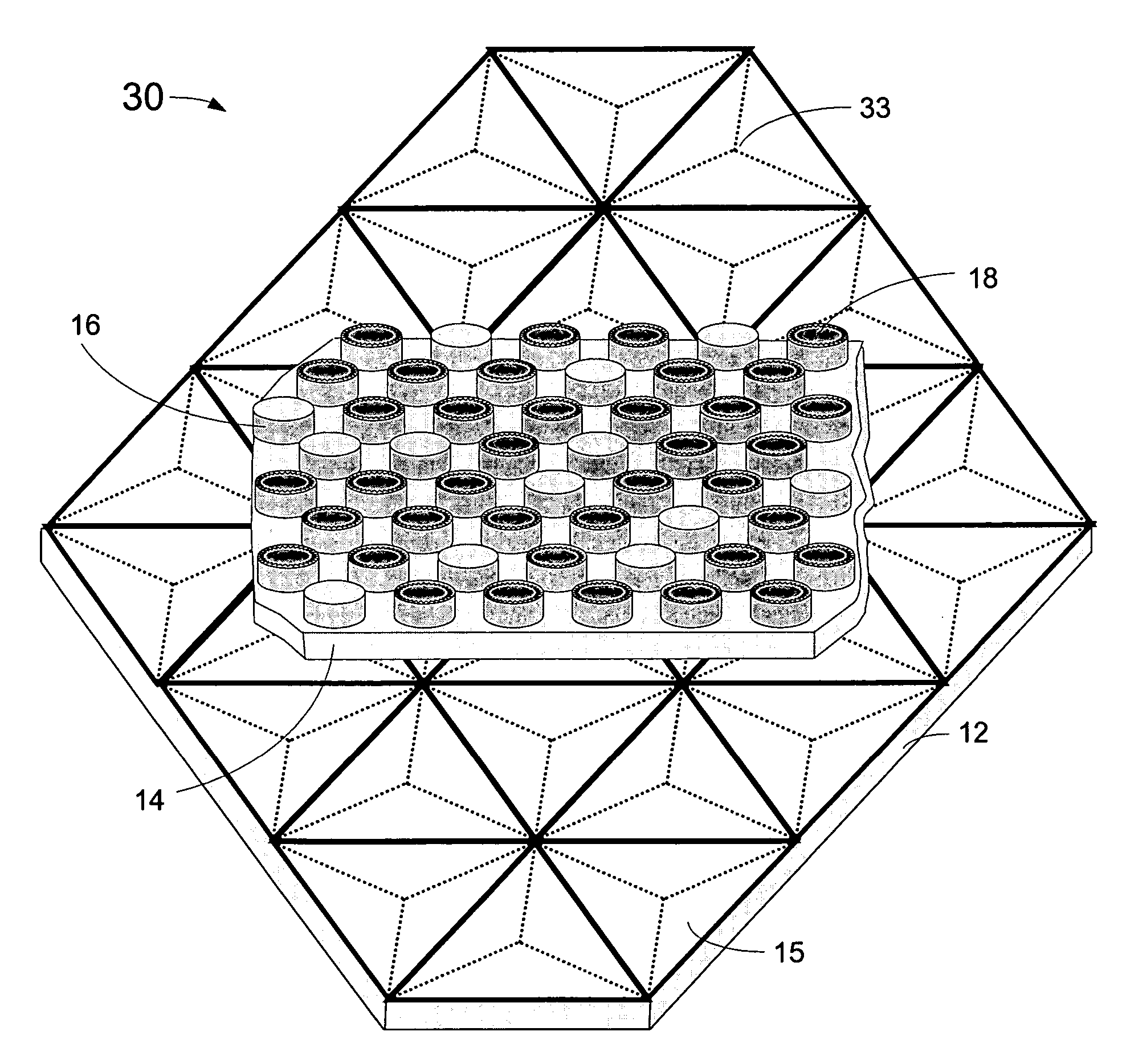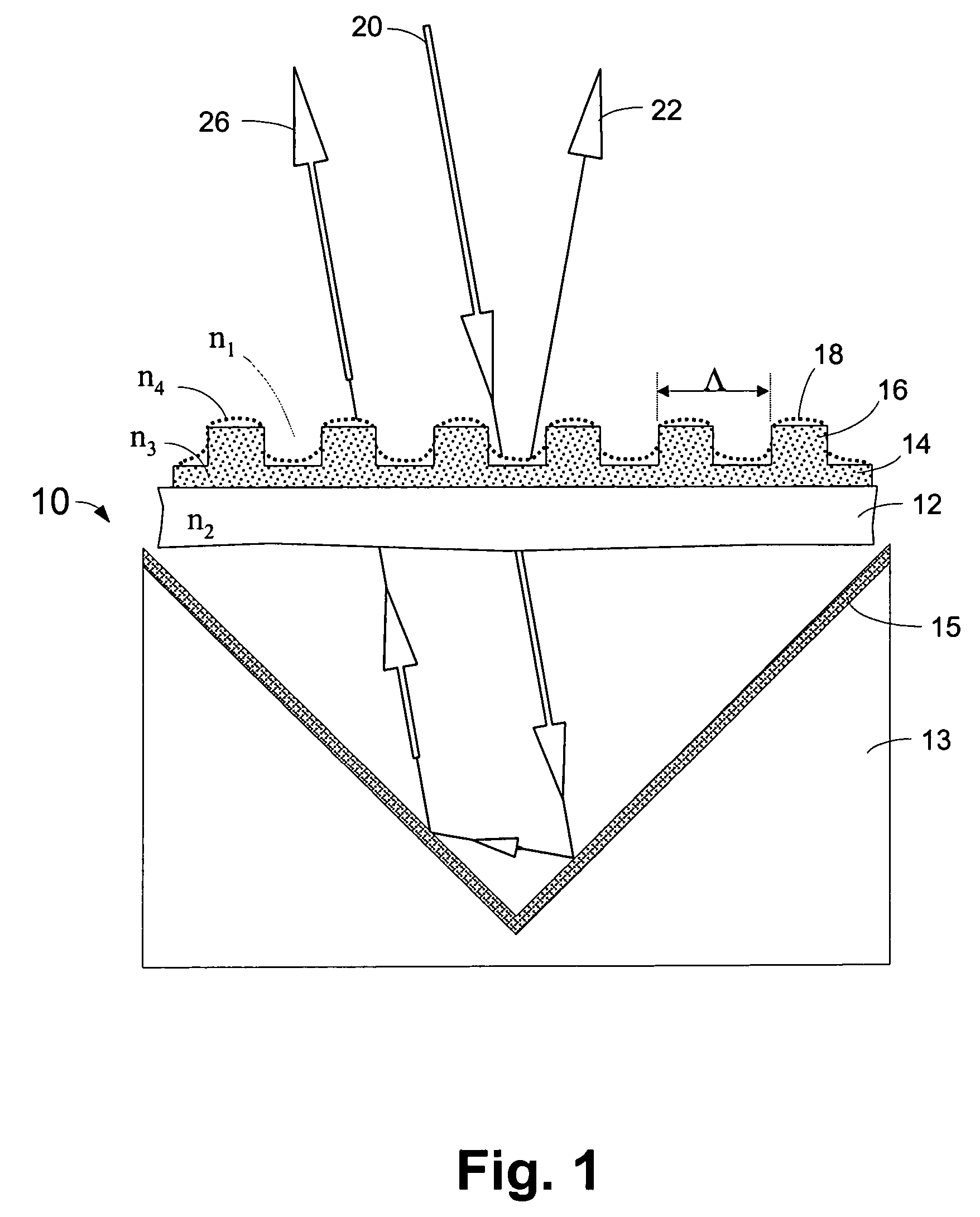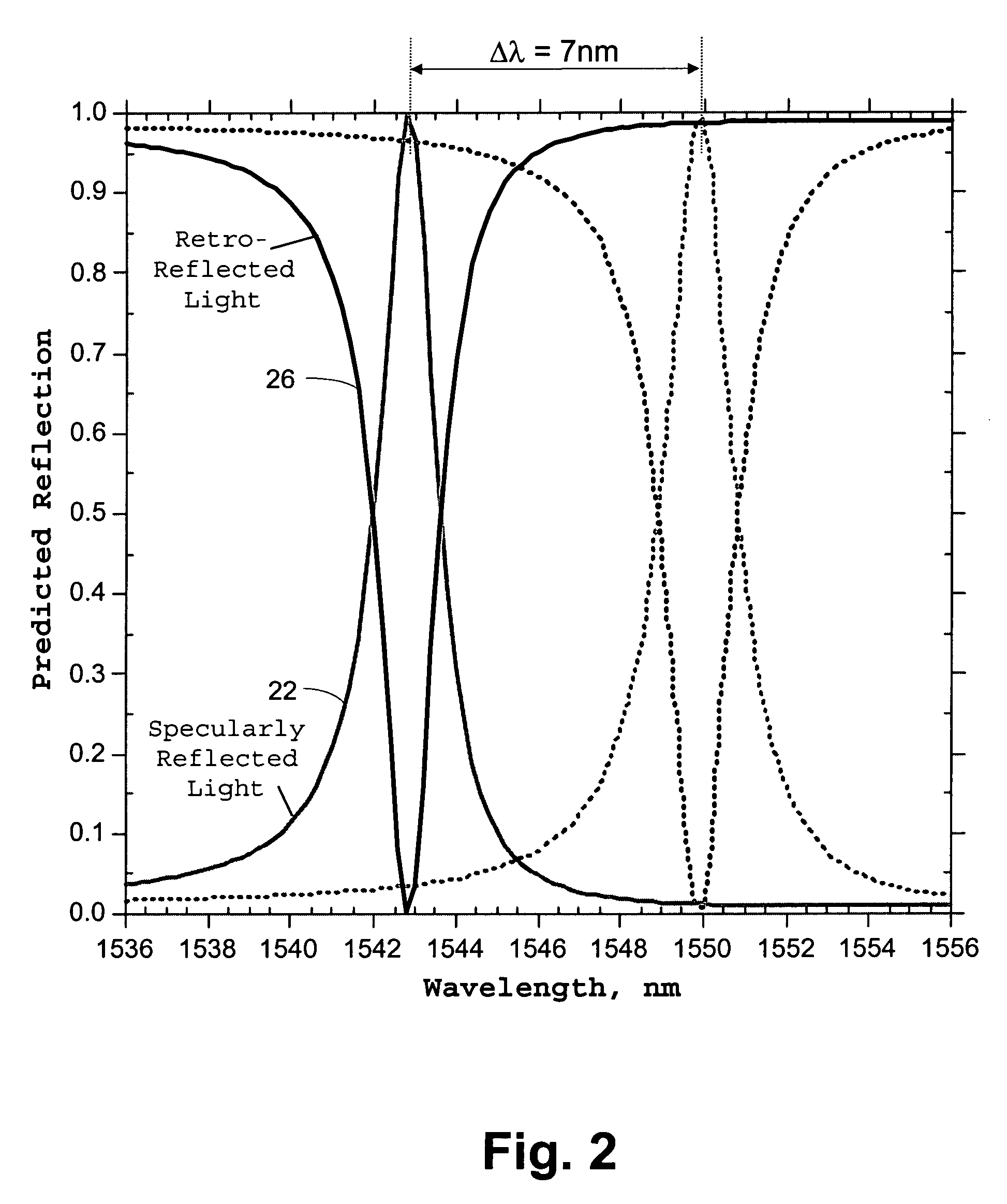Microstructured optical device for remote chemical sensing
a microstructured optical device and chemical sensor technology, applied in the field of optically-based biological or chemical sensors, can solve the problems of limiting the practical use of an ssr to detect chemicals at distances of more than a few centimeters, the use of inexpensive flexible materials such as plastic in the fabrication of ssr sensors, and the inability to accurately detect biologically derived molecules, etc., to achieve efficient reflection of interrogating light beam back
- Summary
- Abstract
- Description
- Claims
- Application Information
AI Technical Summary
Benefits of technology
Problems solved by technology
Method used
Image
Examples
Embodiment Construction
[0035]Device 10, shown in the cross sectional diagram of FIG. 1, operates on illuminating light 20 that contains a spectral content that includes a range of wavelengths that resonate with the surface structures 16. Illuminating light 20 is transmitted through the surface texture 16 containing uniform layer 14 supported by substrate 12 where it reflects off the surface 15 of the corner cube retro-reflector 13. The retro-reflector surfaces serve to redirect transmitted light 20 upon reflection so as to propagate back through substrate 12 and surface texture 16 in a direction that is opposite to and parallel with illuminating light 20, emerging as retro-reflected light 26. Retro-reflected light 26 contains the same spectral content as illuminating light minus the range of wavelengths that resonate with the surface structure waveguide and are reflected as light beam 22.
[0036]The chemical sensing surface structure optical filter is built upon a platform or substrate 12 with an optical in...
PUM
| Property | Measurement | Unit |
|---|---|---|
| angle | aaaaa | aaaaa |
| angle of incidence | aaaaa | aaaaa |
| height | aaaaa | aaaaa |
Abstract
Description
Claims
Application Information
 Login to View More
Login to View More - R&D
- Intellectual Property
- Life Sciences
- Materials
- Tech Scout
- Unparalleled Data Quality
- Higher Quality Content
- 60% Fewer Hallucinations
Browse by: Latest US Patents, China's latest patents, Technical Efficacy Thesaurus, Application Domain, Technology Topic, Popular Technical Reports.
© 2025 PatSnap. All rights reserved.Legal|Privacy policy|Modern Slavery Act Transparency Statement|Sitemap|About US| Contact US: help@patsnap.com



